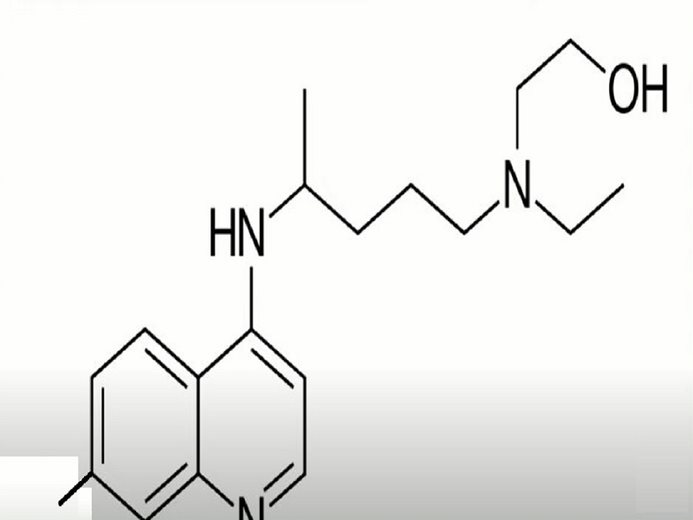A versatile substance, hydroxyquinoline is employed in a wide range of operations in both the pharmaceutical and industrial industries. Many health advantages have been demonstrated, such as anti-inflammatory and antioxidant capabilities. While hydroxyquinoline can be produced commercially, it can also be synthesized at home using simple ingredients. In this article, we will explore the benefits and uses of homemade hydroxyquinoline.
What is Hydroxyquinoline?
The chemical formula for hydroxyquinoline, often known as 8-hydroxyquinoline or oxine, is C9H7NO. It’s a white or yellowish powder soluble in alcohol and water. Often employed as a chelating agent, hydroxyquinoline may attach to metal ions and draw them out of a solution. It is also used to produce pharmaceuticals, dyes, and pesticides.
Read more: Alta Point Vs RXNT EMR: Latest Pricing Plans and More
Making Homemade Hydroxyquinoline
To make homemade hydroxyquinoline, you will need the following ingredients:
- 8-hydroxyquinoline-5-sulfonic acid
- Sodium bicarbonate
- Ethanol
- Water
You will also need the following equipment:
- Glass beaker
- Magnetic stirrer
- Filter paper
- Oven
· Step 1: Dissolve 8-Hydroxyquinoline-5-Sulfonic Acid in Water
The first step in making homemade hydroxyquinoline is to dissolve 8-hydroxyquinoline-5-sulfonic acid in water. This can be done by adding the 8-hydroxyquinoline-5-sulfonic acid to a glass beaker containing water and stirring until the powder completely dissolves.
· Step 2: Adjust the pH
Once the 8-hydroxyquinoline-5-sulfonic acid has dissolved, you must adjust the pH to around 7. You may do this by stirring in sodium bicarbonate to the solution. Continue stirring until the pH has stabilized.
· Step 3: Add Ethanol
The next step is to add ethanol to the solution. Ethanol should be added slowly while stirring to ensure the solution remains homogeneous. Continue stirring until precipitate forms.
· Step 4: Filter and Dry the Precipitate
Once a precipitate has formed, it must be filtered from the solution. Pouring the fluid through filter paper will do this. The liquid can flow through the filter paper while the sediment is trapped.
To remove any contaminants that remained after filtering, the residue must be rinsed with water. Once washed, the residue should be dried in an oven at a temperature of around 50°C until it is completely dry.
Benefits of Homemade Hydroxyquinoline
1. Anti-Inflammatory Properties
It has been demonstrated that hydroxyquinoline possesses anti-inflammatory effects. The generation of pro-inflammatory cytokines in human cells was suppressed by hydroxyquinoline in a study that was published in the journal “Biochemical and Biophysical Research Communications.” This implies that it might have potential as a remedy for inflammatory diseases like asthma and arthritis.
2. Antioxidant Properties
Hydroxyquinoline has also been found to have antioxidant properties. In a study published in the journal “Pharmacology & Pharmacy,” hydroxyquinoline was found to scavenge free radicals and protect cells from oxidative stress. This implies that it could have been used to treat oxidative stress-related diseases, including Parkinson’s and Alzheimer’s.
3. Metal Chelation
As previously noted, the chelating agent hydroxyquinoline can attach to metal ions. This property has been used to produce drugs that target metal ions, such as copper and zinc, involved in developing Alzheimer’s disease. Homemade hydroxyquinoline may have the potential as a low-cost alternative to these drugs.
4. Anti-Cancer Properties
Hydroxyquinoline has also been found to have anti-cancer properties. In a study published in the journal “Molecules,” hydroxyquinoline inhibited the growth of cancer cells and induced cell death. This suggests that it may have potential as a treatment for cancer.
Conclusion
Homemade hydroxyquinoline is a versatile compound with various potential health benefits. While it can be produced commercially, it can also be synthesized at home using simple ingredients. You may produce your hydroxyquinoline at home by following the step-by-step instructions provided in this article. However, it is important to note that working with chemicals can be dangerous, and precautions should be taken to ensure safety. It is also important to note that homemade hydroxyquinoline should be used for research purposes only and not for self-medication or treatment.
Apart from that, if you want to know about Health Observations – A Trainer’s Observations, then please visit our health Category.

